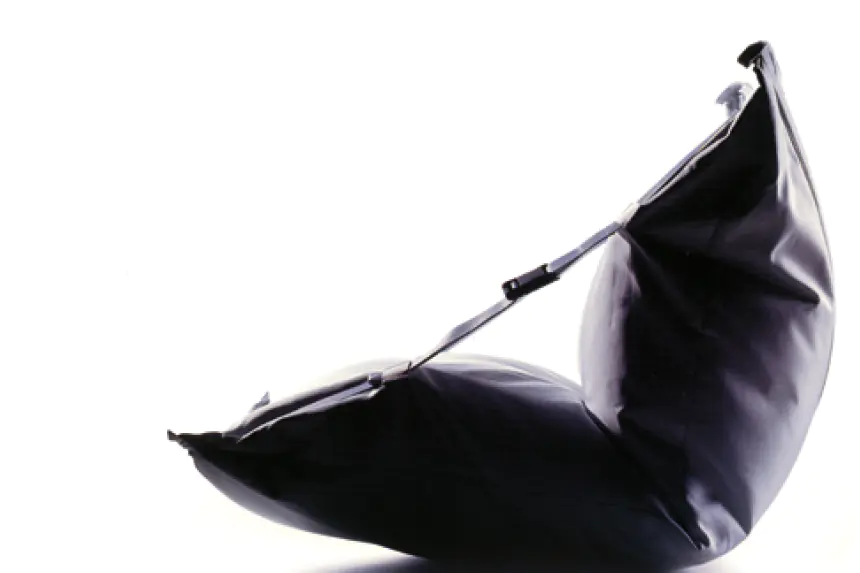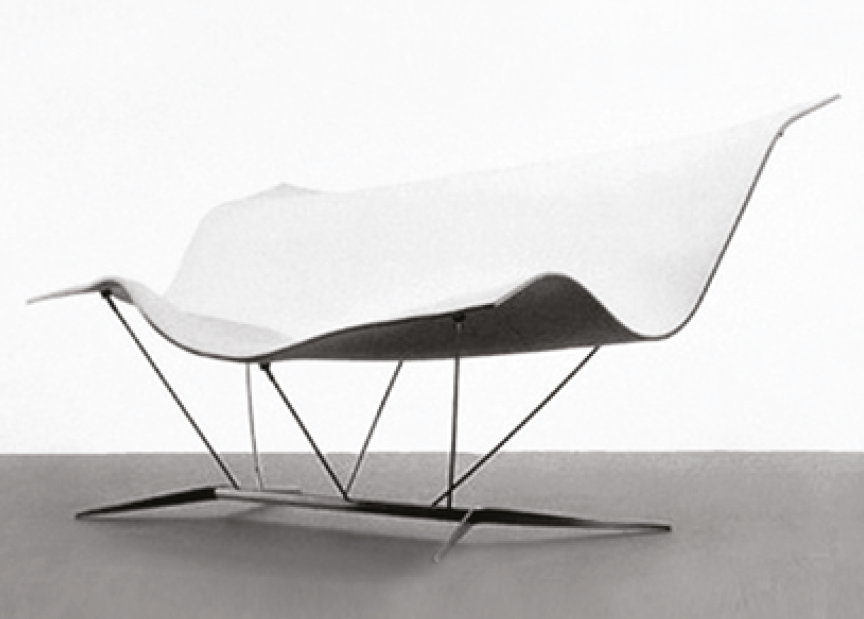For Design Magazine, Ilkka Suppanen, one of the world's most acclaimed contemporary designers, casts a candid look on the very concept of design. In his work, his typically Scandinavian, rational approach flirts dangerously with Italian sensitivity and timeless elegance. With stunning results.
Born in Kotka, Finland, in 1968, Ilkka Suppanen has everything to embody the archetype of the Scandinavian designer: his Interior and Furniture design studies in Helsinki, his further specialising in Amsterdam, his love for sailing and sea, his demeanour and not least, his physical appearance. Yet this enfant terrible of minimal functionalism actually fell in love with Italy's extravagant and glamorous artistic genius and two-thousand-year old sense of aesthetics.

You’re a fond admirer of Italy’s design tradition...
Scandinavia and Italy are two areas of the world that have become strongly associated with design, yet they are characterised by two very different cultural approaches to it. In Italy, people have been "living and breathing" it for almost two thousand years. In Scandinavia it’s an expression of modernity that’s at most one hundred years old. In Italy, it has so many connections to the country’s legacy of art and culture, while in Scandinavia it’s mostly related to industrial development as part of a political vision of prosperity for all. Italy’s design lacks that revolutionary, democratic ingredient, while Scandinavia’s lacks the cultural substrate surrounding it.The world is increasingly "mixing cultures". Does that imply a loss of identity?
It is an issue that needs considering. I am Scandinavian, yet I eat pizza and drink espresso. On the other hand, large multinational companies like IKEA have filled the world with Scandinavian design. I have friends in Italy who have more Scandinavian-looking houses than most people here. I think That it is also a matter of how people use objects. Take the I-phone: it’s a global product, the same everywhere in the world, yet people use it differently according to their culture. From a design standpoint, though, differences are becoming increasingly blurred.

"I have friends in Italy who have more Scandinavian-looking houses than many Scandinavians"
In your opinion, what is the ultimate purpose of design?
We actually know "design" by that word only since a hundred and fifty years or so, but it's always been around, in fact since humankind started making artefacts. We began theorising about it, and calling it "design", with the industrial revolution of the 19th Century, as it became one of the tools of the industrial age. Under that perspective, I see design as an instrument to solve problems, to improve life in general and help turn an existing situation into an ideal situation. In other words, to make the world a better place."Inspiration is for artists. I’m a designer, I make things"
Where do you find your inspiration?
I’m not an artist who “gets inspired”, rather I’m a professional: I look at ways of solving a problem. Maybe I get inspiration from the brief, and in that sense life itself can be inspiring. I like looking around.

"Today’s design is missing a sense of future"
What’s missing in today’s design?
The future. It’s sadly missing from today’s projects. Design is definitely showing a lack of confidence in the future, which isn’t surprising given the current world situation. People are extremely worried and pessimistic. We are not capable of envisioning a positive tomorrow. I wish we would start looking at the future again in a brave way.How do you envisage future scenarios?
Our homes have changed over the past two years. Spaces aren’t defined as they used to be. Today, our bedrooms, offices, living-rooms, kitchens, have all become meeting rooms. Our relation to our domestic spaces has changed, and we are not going back. It’s a very interesting development, offering huge opportunities for design. Take the kitchen, for instance, we still call it a kitchen but we spend ten hours a day in it, working.What about new technologies, and NFT?
I'm trying to figure out how NFT's could impact the work of the designer. They certainly seem to be effective in protecting and recognising copyright. For what concerns new technologies, AI and domotics have already helped freeing humans from simple, heavy tasks and chores, leaving us with more meaningful and enjoyable activities. If we apply that principle to industry and to our everyday life, it seems very appealing, with robots taking over the most labour-intensive activities, as they do today. But how far can we go, do we all want intellectual jobs? Besides, can we make the most of a manual-work-free society? Is it even sustainable?What’s your view on eco-friendly materials and sustainable product-lifecycles?
My opinion is that it's more complicated than it seems. We might be well-meaning but end up doing the wrong things. I’m constantly learning, also from my students. Every apparent solution seems to have counterindications, and many seemingly sustainable materials might have higher environmental footprints than the ones they’re supposed to replace. Of course, it would be great if we could stop making plastic things. But I also think we cannot generalise and we should adopt a case by case approach.

"I have no idea whether my own projects have improved the world!"
How did your own work make the world a better place according to your own definition of design?
Quite honestly, I don’t know! Projects are like children, once they grow you always hope they’ll do well, and do some great things, but that’s out of your control. Maybe people enjoyed my products. Maybe my objects made them happy, or were used in a meaningful way. I’d consider that a success. I wish, and I like to think it’s the case, that they brought some meaning in their lives. How can we define “meaningfulness” in an object? In 1944, during WWII, my father was 4 and lived with my grandmother. One day, as enemy troops approached their house, my grandmother was given half-an-hour to evacuate. She could only take one thing with her. She grabbed my father, and an old wall-clock and some sheets to wrap it in. Of all things, she chose the most useless, heavy and value-less object in the house, yet to her it was the only thing worth saving. Because it was meaningful to her. We never got to know why and how, and have always taken it as a family joke, but it goes to show that sometimes it’s hard to judge emotions and the real value of things.Maybe, we like to imagine, that’s where Ilkka got his wide blue eyes from, and his kind ways. An innocent, candid attitude to life that never takes anything for granted.

Bio
Ilkka Suppanen is one of Scandinavia’s most successful and known designers. His works have been on display at some of the most prestigious venues in the world, such as the Venice Biennale and New York’s MoMA, and are part of the permanent collections, among others, of Amsterdam’s State Museum and Paris’s Centre Pompidou. After his studies in Helsinki and Amsterdam, he founded his Helsinki-based Suppanen Design Studio in 1995, and created the Snowcrash Project, a design cooperative, together with three colleagues in 1997. During his career, Suppanen has won many prestigious awards and his works have been recognised in numerous publications around the world. His attraction for Italy’s art, culture and design tradition led him to collaborate with some of the most influential Italian designers. Among them Giulio Cappellini (flying Sofa), and Raffaella Mangiarotti (undecided TV stand). He continues to work for an international clientele on the most diverse projects.Copyright © Homa 2022
All rights reserved

.jpg?VGhlIFBlcmZlY3QgU2xvdC1pbijmraPnoa4pLmpwZw==)


































